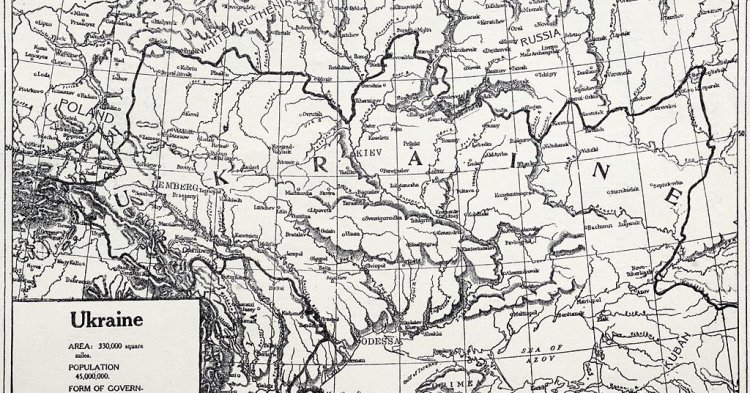The dispute over Ukraine’s future shows that Europe’s security is currently in the hands of two rival and conflicting powers: the United States and Russia. For now, the European Union is an irrelevant observer. If the escalation of weapons piled up on the borders between Ukraine, Russia and Belarus were to precipitate into tragedy, Europeans would have to resign themselves to suffering a second Iron Curtain in the heart of Europe. The EU, a political project to abolish national borders, would suffer a crushing defeat.
The European Union does not have a plan to deal with the Ukraine crisis, despite the fact that the problem dates back to the years of the disintegration of the USSR. Suffice it to recall that the Treaty of Maastricht, approved in 1992, provided for the creation of an Economic and Monetary Union, with the establishment of the European Central Bank, and as far as security was concerned, proposed a common foreign and security policy that could “lead to a common defense”. Today, thirty years after that commitment, we are still waiting to understand what the Union is doing in this regard. Even the Strategic Compass does not propose anything precise. European security depends on military forces outside the Union and the European power vacuum leaves dangerous room for manoeuvre between the two nuclear powers: both want to extend their area of influence in Europe or prevent the opposing power from doing so.
Here I limit myself to reformulating the proposal for a Common European Home (Gorbachev) and for a Europe with concentric circles (Mitterrand), naturally taking into account some aspects of political reality that have changed after thirty years. I present a three-stage plan.
- Ukraine must remain a neutral country. If it joined NATO, it would allow NATO armaments to be extended to Russia’s borders. Russia’s Foreign Minister, Lavrov (1/2/2022) is right to point out that the OSCE provides for a code of conduct stating that its members must not endanger the security of other states. Security, Lavrov argues, is an indivisible good, one cannot increase one’s own security by reducing that of others. When the Soviet government set up missile bases in Cuba, the U.S. government threatened atomic retaliation. The opposite consideration also applies. Ukraine cannot become a satellite country of Russia. The European Union must therefore propose a temporary solution until a more satisfactory agreement is reached. The simplest solution is for all the countries concerned – the USA, Russia and the EU – to recognise Ukraine as a neutral country, like Switzerland.
- The creation of a buffer state in the heart of Europe will serve to ease the international tension between the US and Russia, but it cannot be considered lasting until the crucial problem is addressed: the creation of peaceful cooperation between all the countries involved in the current crisis. Suffice it to recall that Russia is an important supplier of energy to European countries and a no less important market for their exports of manufactured goods. For Russia, peaceful cooperation with the EU is crucial to increasing its economic and technological efficiency, on which the economic and social progress of its citizens depends. The next step is to reactivate the 1994 Partnership for Peace, which allowed Russia to participate in NATO meetings as an observer. The Russian government’s participation ceased when it became apparent that NATO was including one country after another of the former Warsaw Pact against its will. We need to relaunch a proposal for peaceful cooperation, bearing in mind that Russia is not just a European country but a Euro-Asian country. The EU should point out to the US government that NATO is a military alliance created to defend Europe from an adversary that no longer exists (the USSR) and that in its statutes (Art. 2) it is expected that its members can develop economic cooperation, not just military. This is the way to increasingly associate Russia with a process of peaceful coexistence that goes from Vancouver to Vladivostok: a free trade area in which the will to progressively break down the economic, cultural and political barriers between citizens of all the continents involved in the pact matures. This objective would have important positive implications on the Atlantic and Pacific fronts.
- The guidelines outlined here for the solution of the Ukrainian crisis should also be adopted by the Conference on the Future of Europe. A central issue will certainly be foreign and security policy, where the reticence of many countries has held back progress over the past thirty years. Now it is necessary to take note that the Cold War is over, that the former superpowers no longer exist and that conflicts between the “modern great powers” risk provoking dangerous nationalistic involutions on a world scale. It is a dangerous game that could end in a catastrophe on both the military and environmental security fronts. The European Union must take note that, if it does not know how to defend its model of civilization, it will be crushed by those who have no qualms about using the traditional tools of power politics: divide and rule. A European defence union is needed. At the end of the First World War, the USA and the USSR presented themselves on the world stage with a precise strategy of governing the international order: the defence of democracy and the defence of communism (of socialism after 1945). The European Union has a different strategy to propose to humanity: its model of integration, the abolition of economic, social and cultural barriers between member countries. The realization of the four freedoms – of the circulation of goods, services, capital and people – is a reality that the world admires. The EU was awarded the Nobel Peace Prize in 2012 for transforming a continent of wars into a continent of peace. There is no need for the EU to give itself an army comparable to that of the great powers that exist today. The European Union is a supranational civil power. Its strength in foreign policy will depend on its ability to offer all peoples a model of peaceful integration on the different continents (as in the case of the African Union and South America) and towards its neighbors (as in the case of Russia). Finally, this model can be the basis for serious reform of the UN. The point of arrival, however far away, will be the Community of the citizens of the world.
The new German government has placed in its program the creation of a United States of Europe. If the Conference on the Future of Europe has the courage to support this objective and to open a constituent process to enable the Union to equip itself with a genuine European democracy, accountable to a federal government, the European power vacuum will finally be filled.


1. On 20 February 2022 at 06:01, by Hujjathullah M.H.B. Sahib Replying to: Ukraine and the European power vacuum
Replying to: Ukraine and the European power vacuum
Guido Montani’s article rightly stressed that the EU is a “supranational CIVIL power” that advocates and extolls the pacific integration gradually of peoples from Vancouver to Vladivostok. Hence the rackless dumping of sophisticated armaments along the Russo-Ukrainian border regions clearly would be militating against this benign ideal !
Follow the comments: |
|
